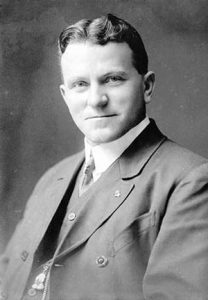Hiram W. Elliott
Table of Contents
Share This

Photo courtesy of granddaughter Sister Mary Rose Elliot, RSM
US Navy Corpsman Hiram W. Elliott (1880 – 1949) came to Guam in the early 1900s to work at the Maria Schroeder Naval Hospital. He married Concepcion Martinez of Hagåtña, and the couple had 12 children. He was also a teacher at the public night school in Hagåtña. After Elliott retired from the Navy he used his pharmacy training to open Elliott’s Drug Store, near where the Hagåtña precinct/police station is now located.
Elliott was a founding member of the American Legion in 1930, Mid-Pacific Post 1 and was chosen to take charge of the Guam Museum when it opened in 1932. Under Elliott’s tenure, the Museum hosted tours for military personnel and off-island visitors.
In a monthly column in the Guam Recorder, Elliott worked to generate public interest in the Museum, writing that the Museum “housed the most interesting and curious artifacts of the ancient CHamoru/Chamorro civilization, including implements and tools used in Guam in early centuries.” Elliott believed that a “clear conception of past history” could only be acquired by actually viewing the objects on display at the Guam Museum. At the time, these included an ancient Chamorro latte, slingstones, and other stone tools, but also the private chapel of Guam’s first ordained Chamorro priest, Padre Jose Palomo, and Palomo’s own collection of ancient relics.
After managing the Guam Museum for four years with the assistance of Joaquin T. Aguon, the operation was taken over by the US Navy in 1936. Elliott, along with all the other Americans on Guam at the beginning of World War II, was taken as a prisoner of war to Japan in 1941. He survived, but returned to Guam in 1945 in poor health, and died in 1949.
